Every year, millions of people visit the Columbia River Gorge National Scenic Area to experience the windswept flowering hills, arresting vistas and towering waterfalls scattered throughout the landscape.
While the impacts of all those people might not be immediately apparent to those snapping selfies at a waterfall or short-cutting trail switchbacks, conservation managers and environmental stewards are well aware and they worry our infatuation with the Gorge’s most beautiful features is more like an abusive relationship.
Loving to death: the specter of well-meaning but destructive hordes overwhelming recreation sites and detracting from each other’s outdoor experience is a hot topic among land managers across the United States and the world at large; so too is the quandary of balancing ecological preservation, the individual wilderness experience and general public access.
In light of a relatively recent recreation boom, Gorge stakeholders are pondering the same while they look to guard the future of the revered landscape.
The scenic area is managed by the U.S. Forest Service and the Columbia River Gorge Commission, a 13-member bistate committee. It encompasses 292,500 acres, but the recreation takes place at just a handful of sites.
“Last summer I felt like there was a tipping point where some places were most definitely getting loved to death,” said Kevin Gorman, executive director of the conservation group Friends of the Columbia Gorge.
“Definitely, there are certain areas … that we need to take some steps to figure out how to protect.”
Gorman said his group is tackling how to do “visionary and sustainable recreation,” but it faces a conundrum even within its own mission to protect and enhance the Gorge’s natural features while also building public support.
“The way to build support is to get people out there, but if you get too many people out there, you’re not going to protect and enhance it. But if you don’t get people out there they’re not going to care.”
Unique landscape, common burden
The Gorge is a geologic phenomenon millions of years in the making. More than 80 miles long and 4,000 feet deep, it is a canyon bisected by one of the largest rivers in the United States and the only near-sea-level passage sliced through the mountains that range from Canada to California.
In a given year, the temperate rainforest in its mountainous western edges may receive more than 100 inches of rain, while fewer than 15 inches might fall in the eastern grasslands.
Between the extremes exists ecologically dynamic microhabitats that are home to more than 800 different types of plants — at least a dozen of which are found nowhere else on Earth. Some of the Gorge’s most ecologically unique landscapes are also its most visited.
Rachel Pawlitz, the Forest Service’s spokeswoman for the national scenic area, said field rangers at the most popular sites are reporting parking shortages, traffic congestion, excess trash being left along the trails, people short-cutting switchbacks, half-buried feces and graffiti on historic buildings, signs, rocks and trees.
Gorman said both sides of the Gorge have problems, but everything is more pronounced on the Oregon side.
“The Oregon side has more trails and more development and, because of the (Columbia River) Historic Highway, a 100-year head start,” he said. “The historic highway was built as a scenic highway to get people out to those places … It was a playground. That mind-set continues.”
Enlarge

Ariane Kunze
Portland resident Lauren Petrizzo said she hikes around the Columbia Gorge fairly often. She agrees that many of its sites are being loved to death.
As an example, she brought a bag with her during a hike to Angel’s Rest, a popular overlook on the Oregon side, after previously seeing lots of litter along the trail. She said came down with the bag filled with all kinds of trash and “like 20 bags of dog poop.”
“I wish everybody that did go out tried to be more responsible,” she said.
On the Washington side, Catherine Creek and Dog Mountain are hot spots during the spring and early summer when the wildflowers are in bloom.
The parking lot at the trailhead fills early in the mornings and cars are often seen parked along the highway shoulder a half-mile away. Another issue is visitors’ footprints in the meadows, which can endanger the wildflowers.
The Oregon Department of Transportation estimates about 2 million people visit Multnomah Falls every year, though other agencies’ estimates are greater. The parking lot off Interstate 84 regularly fills to capacity in the summer months. When it does, the gate at its eastbound entrance closes. On May 28, the day before Memorial Day, the gate closed 14 times.
“It was pretty much constantly closing between 9:30 a.m. and 5 p.m.,” said ODOT’s Jake Warr.
When that happens, the two-lane historic highway becomes a mess. Traffic jams can last for well over an hour as visitors search for parking in a tiny lot and yield to streams of pedestrians.
Enlarge

Ariane Kunze
Of all the places land managers are worried about, Oneonta Gorge is near the top of the list. Just east of Multnomah Falls, it is perhaps one of the most beautiful and unique places in the scenic area.
“There’s some characteristics that make it unique and are found only there,” Pawlitz said.
The narrow slot canyon creates its own microclimate and is home to an endemic dragonfly. Moreover, the creek’s frigid waters provide a rare, north-facing cold-water refuge to migrating Columbia River salmon.
There’s no trail into the gorge, just small vegetated shorelines, along a stream that moves beneath a substantial logjam and through a twisting mossy canyon that ends at a waterfall. The site isn’t designed for many visitors, but it’s incredibly photogenic and its popularity has exploded.
“Prepare for crowds. Masses of people. Hordes. Think Disneyland,” Petrizzo wrote in response to a question posed about visiting Oneonta in a Facebook group popular with Portland hikers.
She had visited on a Wednesday a couple weeks prior and was taken aback by the number of people stuffed into the slot canyon.
“It was a little insane … (It) was so bad you couldn’t move without bumping into somebody. People were taking toddlers and crying children over that logjam,” she said, adding that the foliage looked as if it was more trampled than when she visited in August 2016.
Pawlitz said large crowds in Oneonta Gorge are something of a new normal during the warm months. The Forest Service officials worry about the high numbers of people trampling through the ecologically important creek when salmon are migrating in the river below. The agency is weighing its options.
“With so many people in the stream through the summer and late fall that’s one of our concerns,” Pawlitz said. “We don’t know if a closure is our solution, but we want to look at it scientifically.”
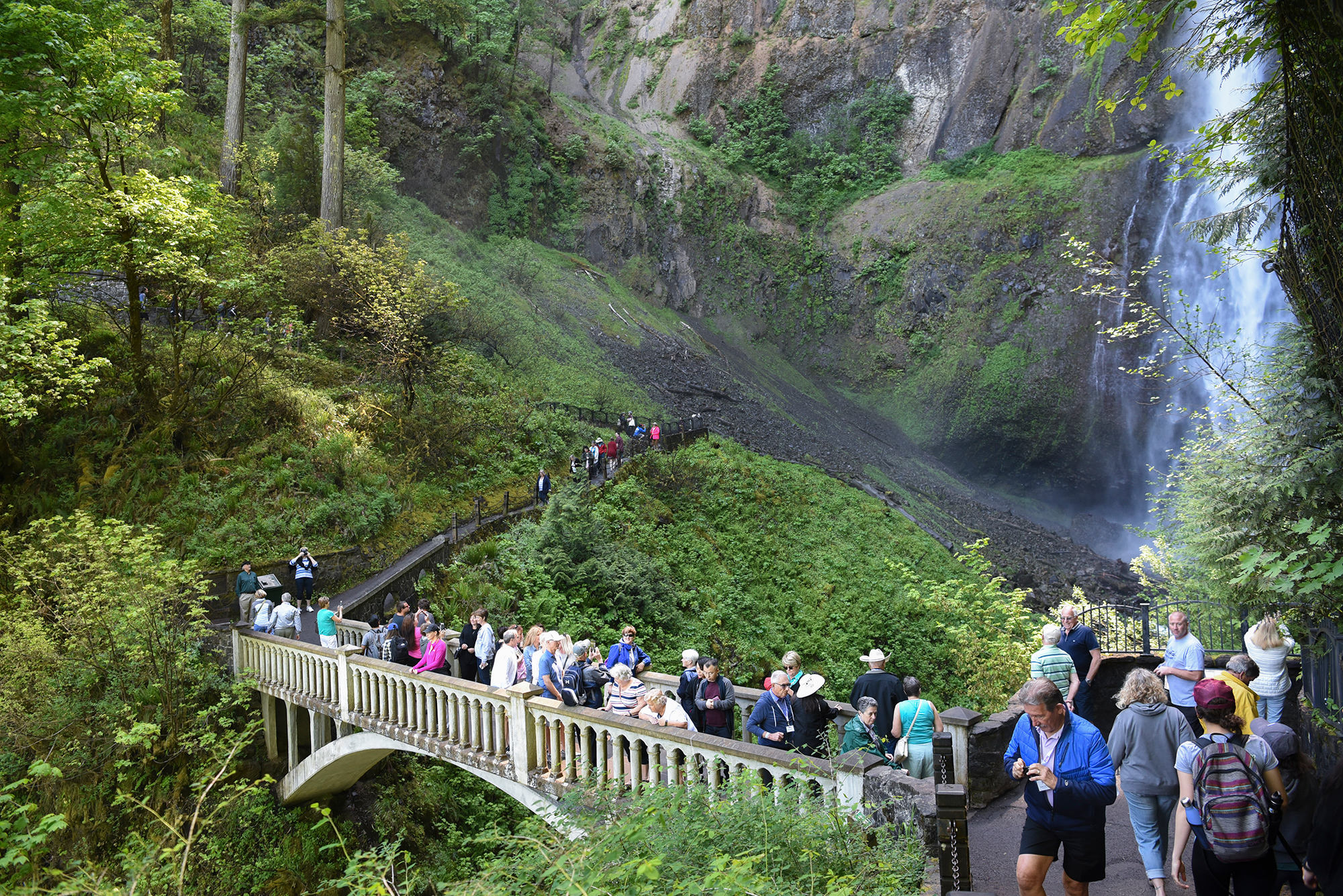
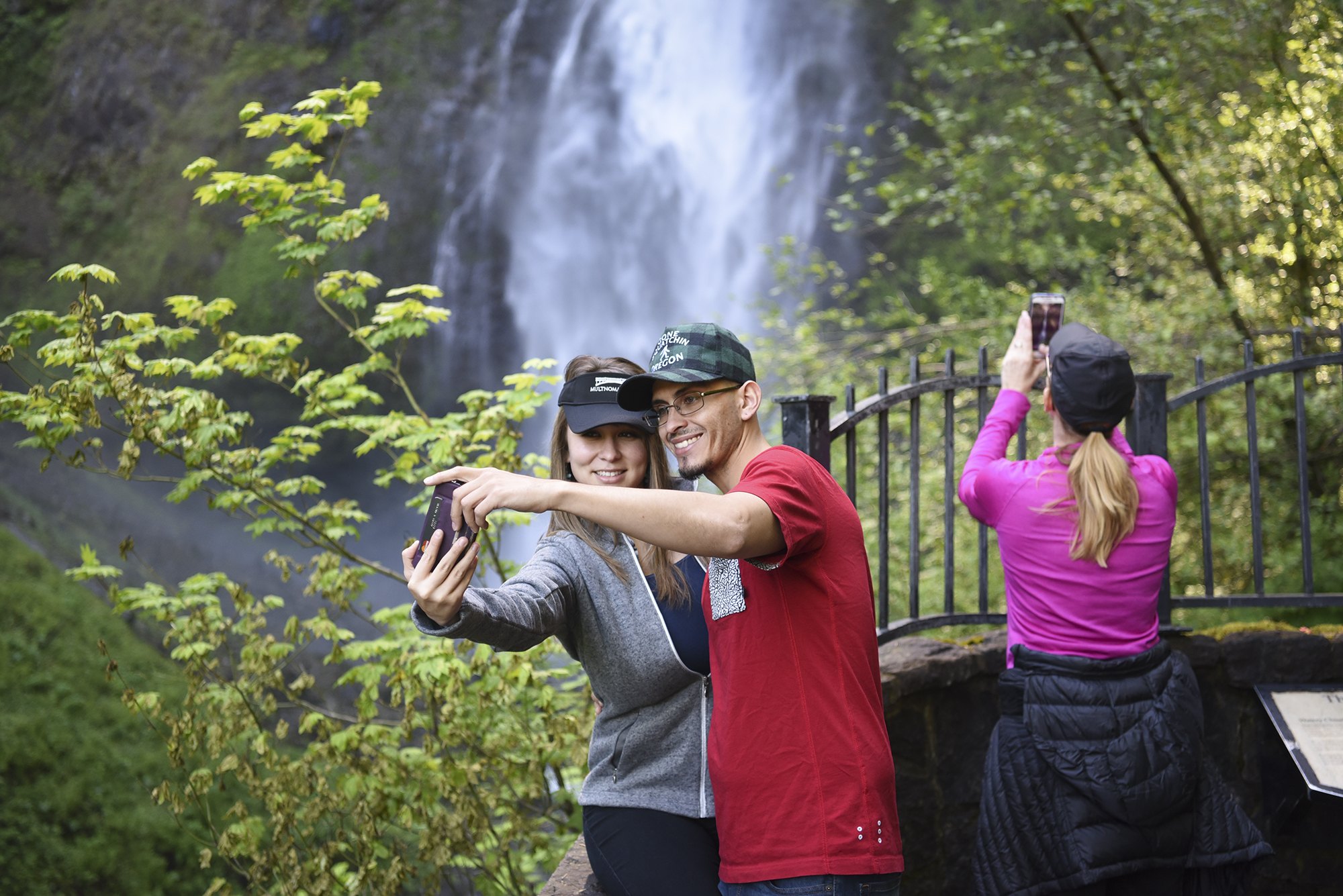
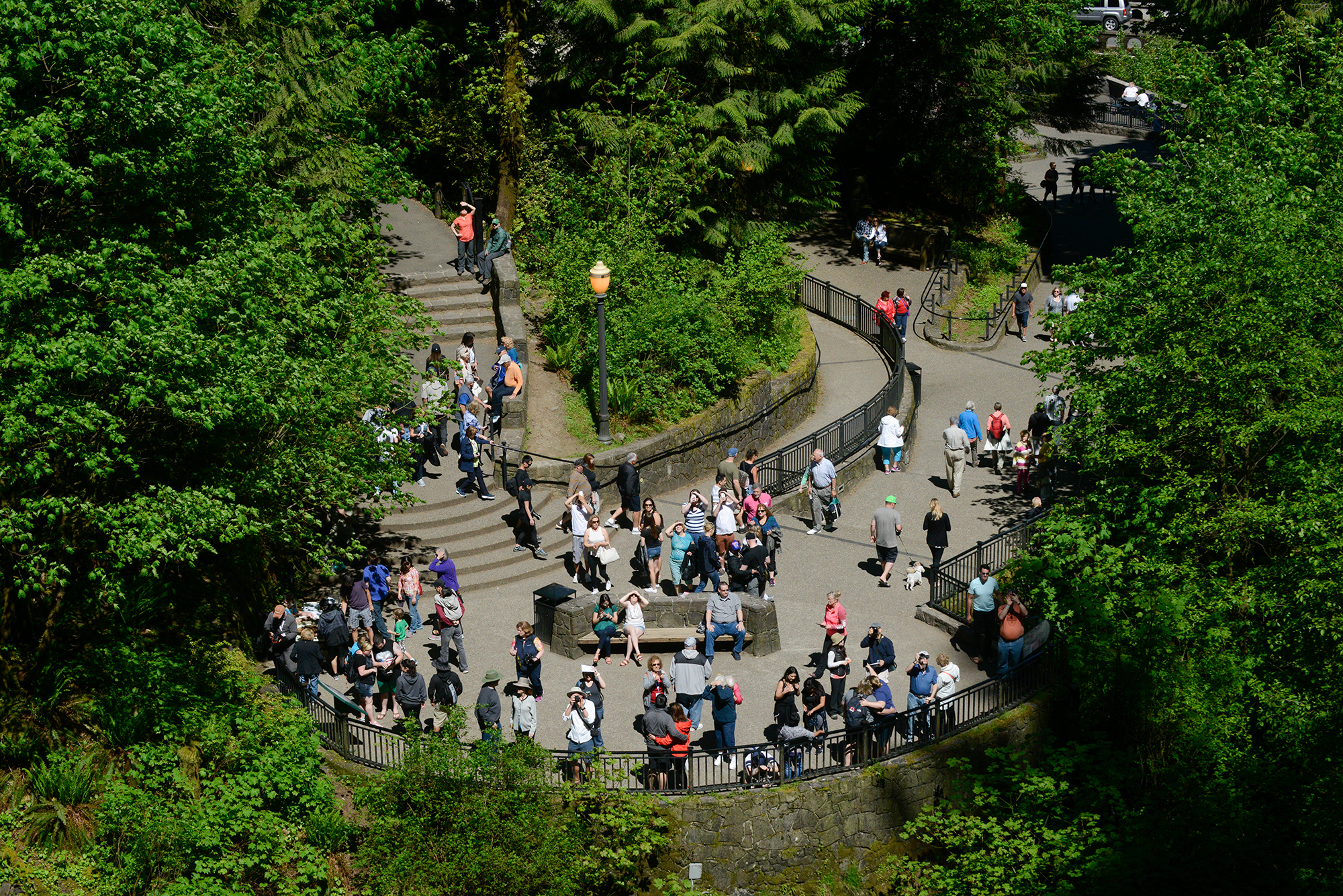
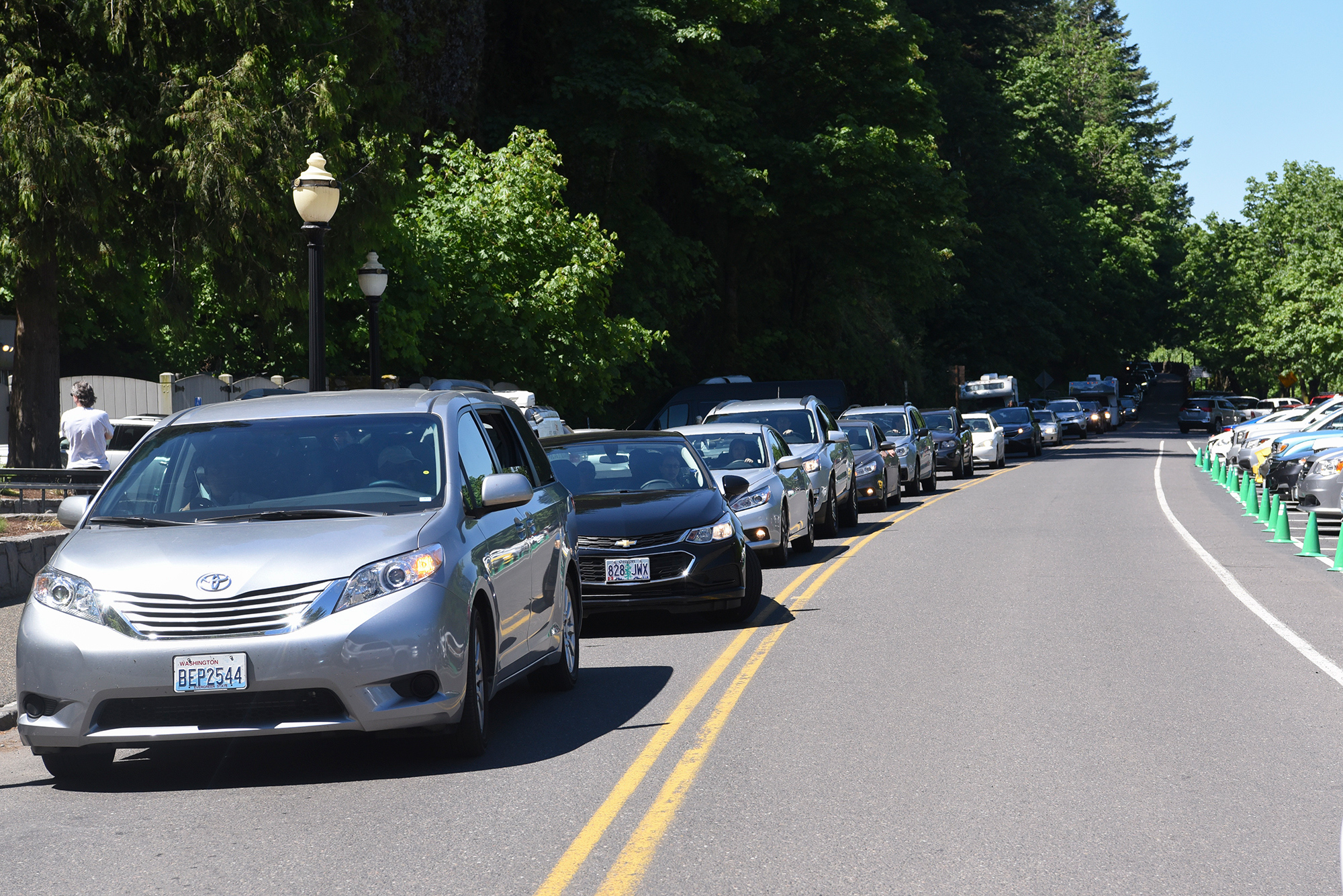
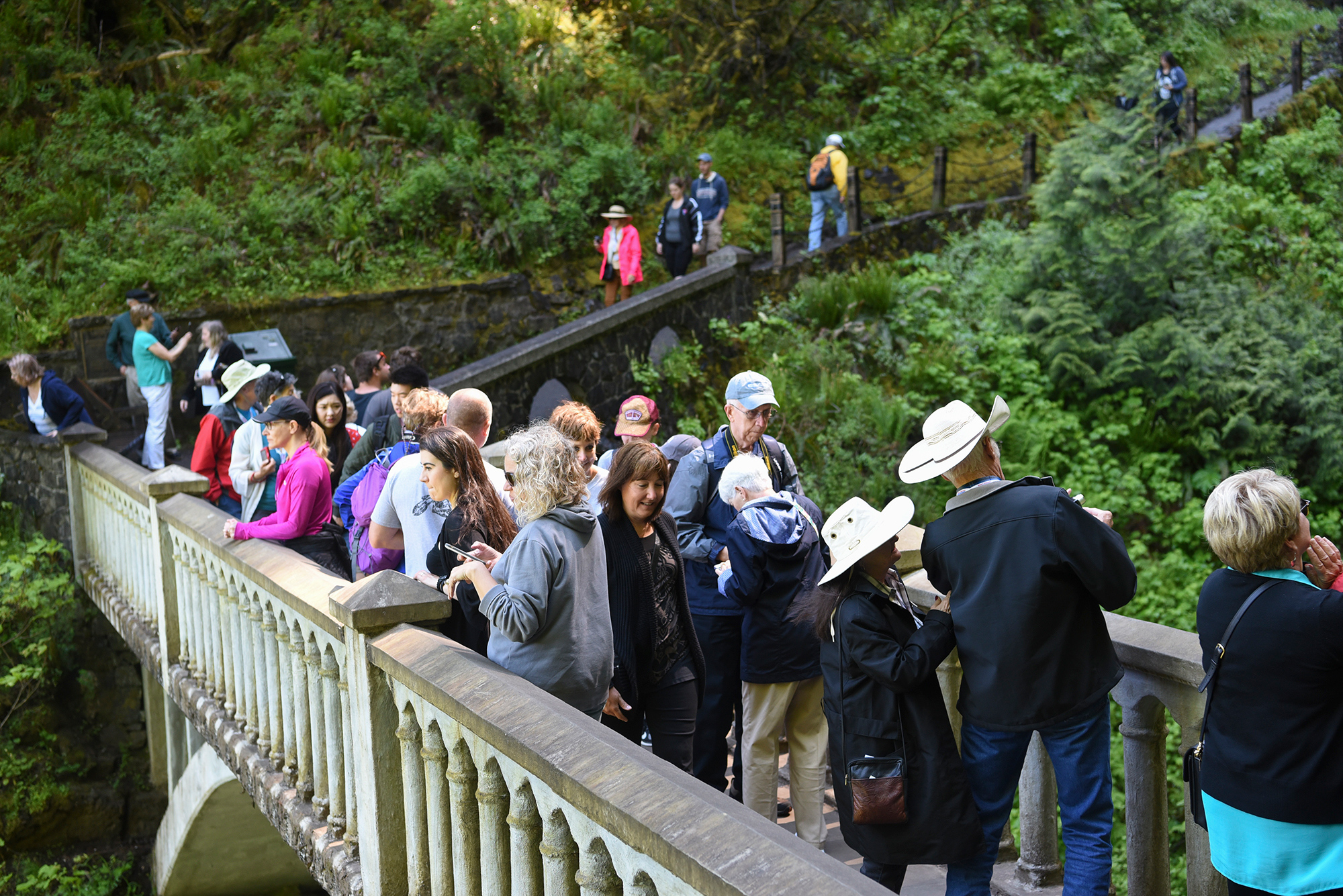
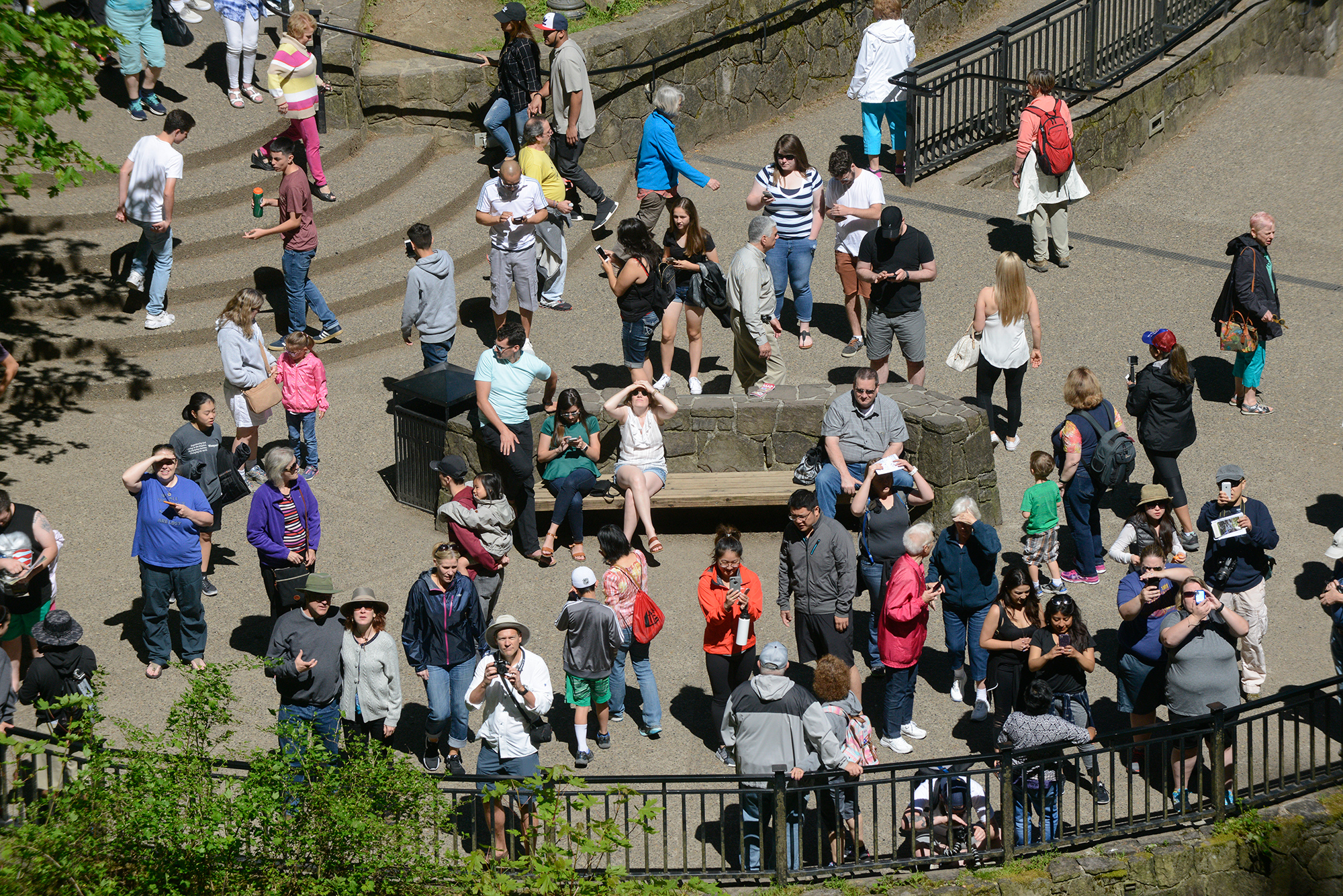
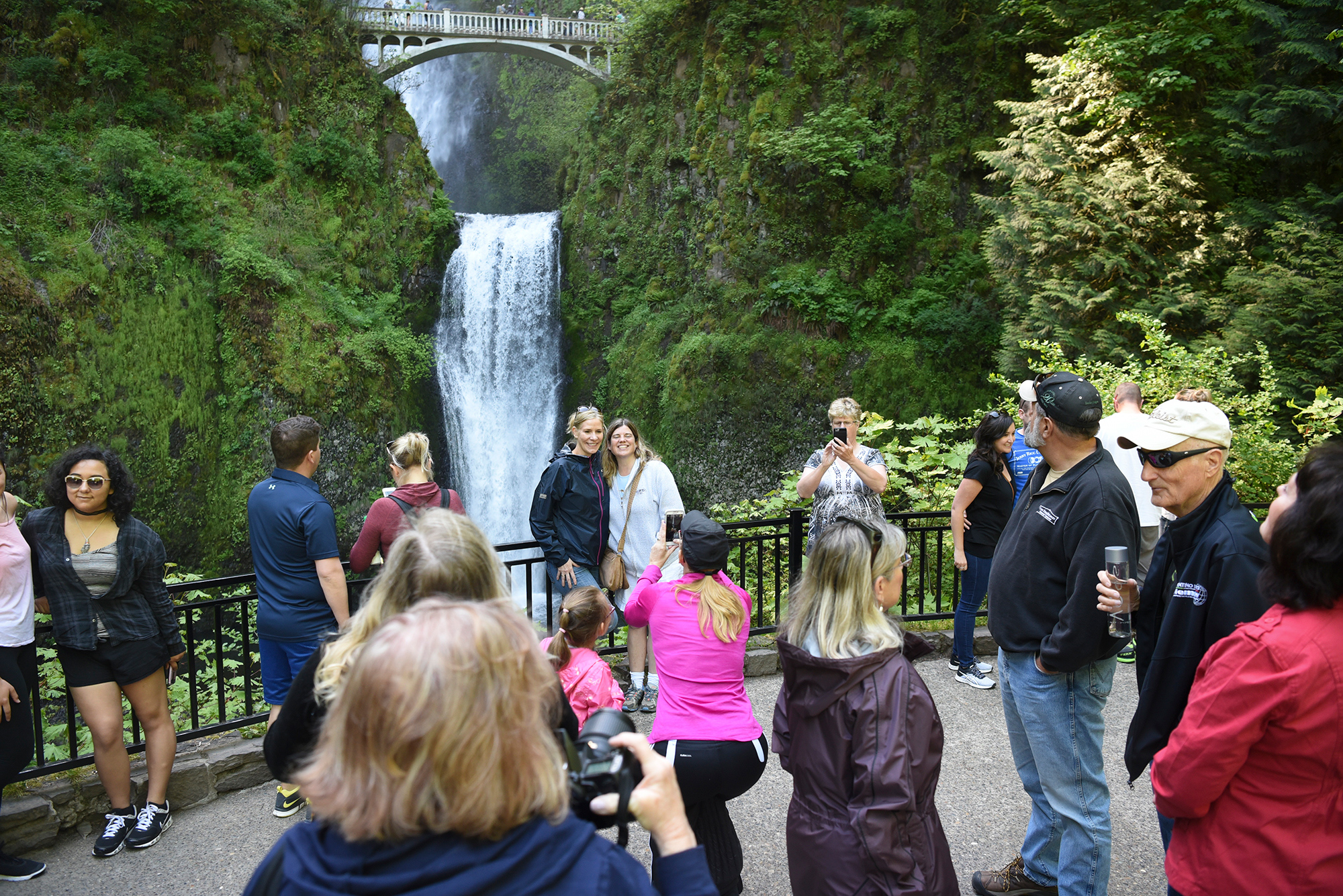
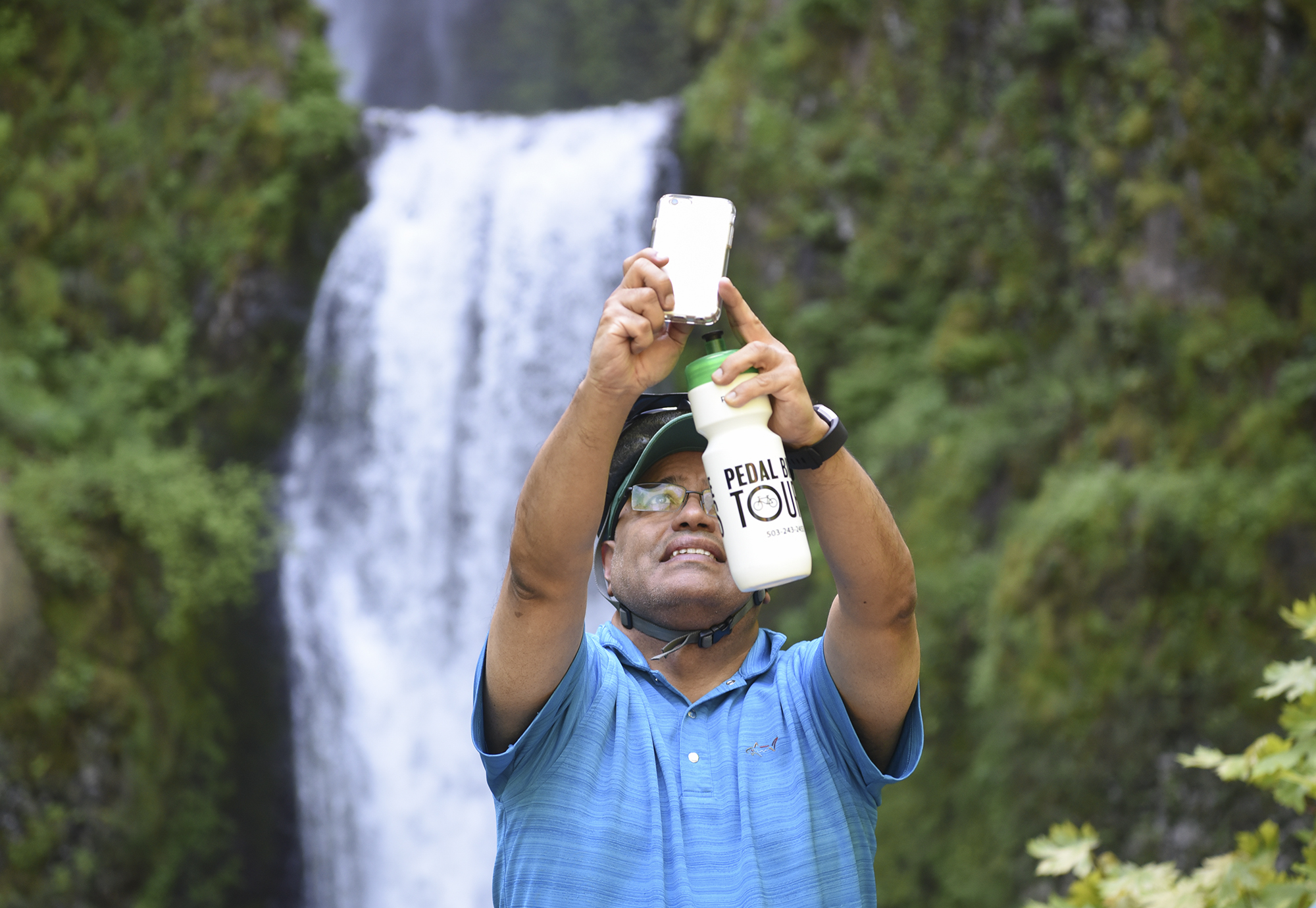
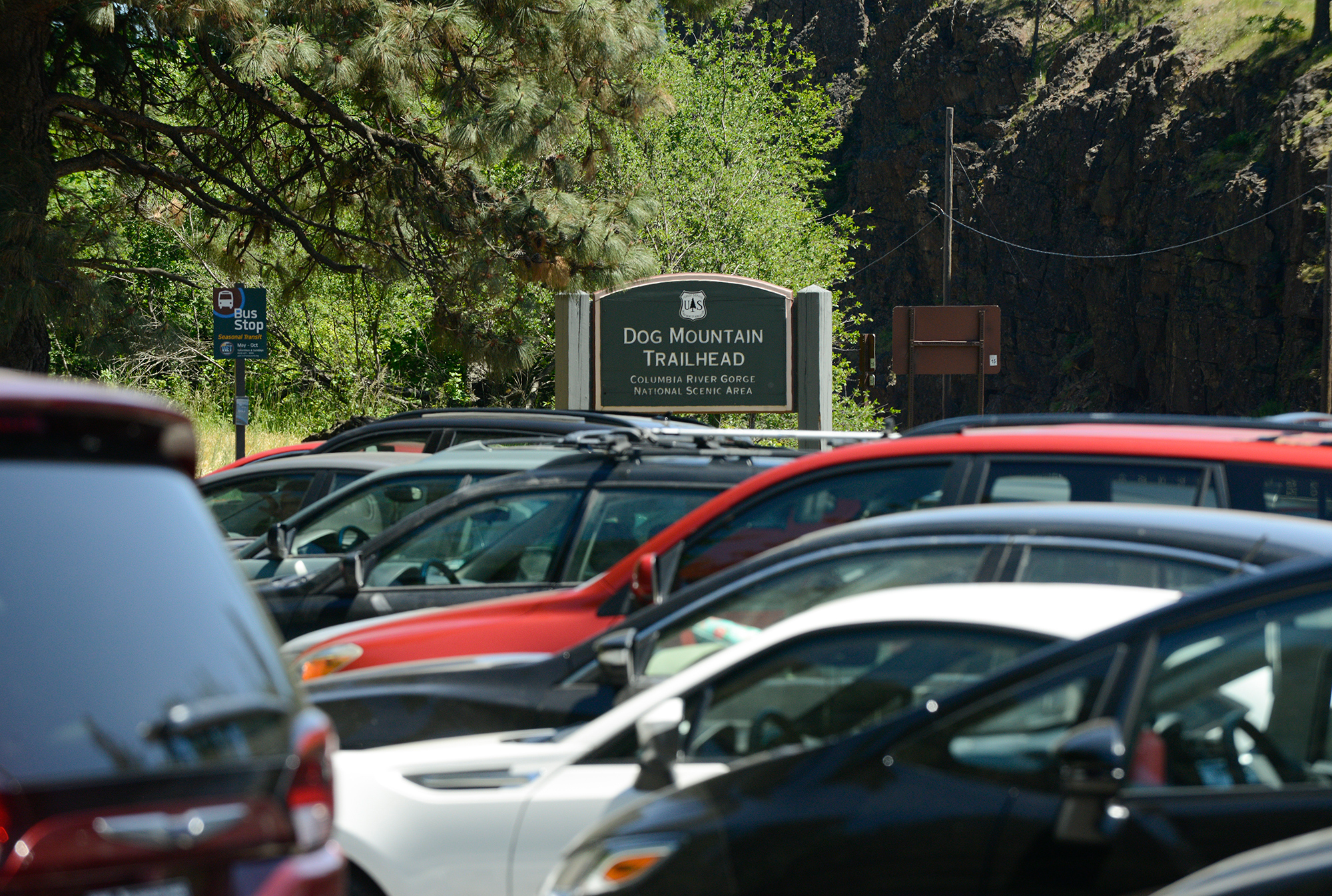
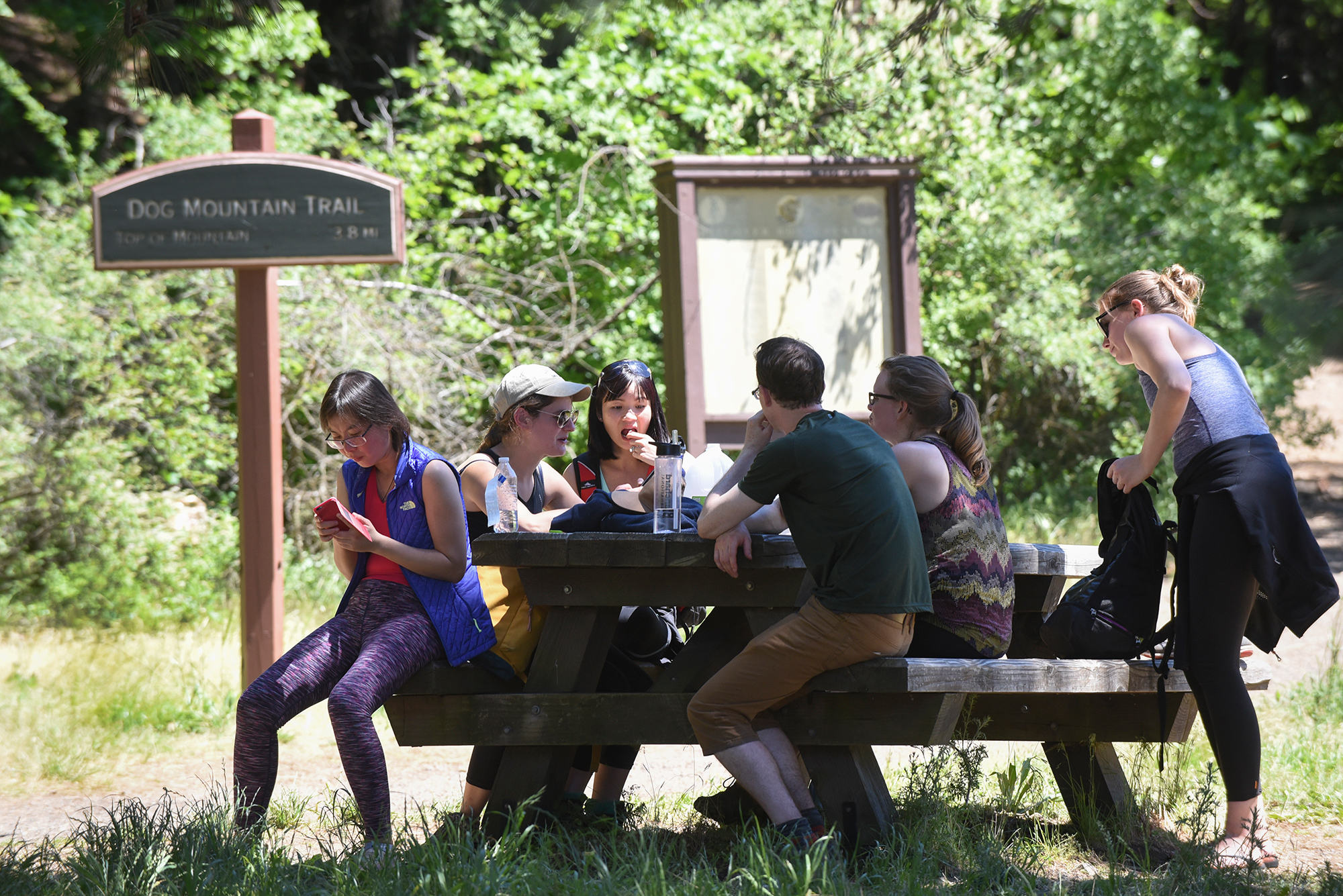
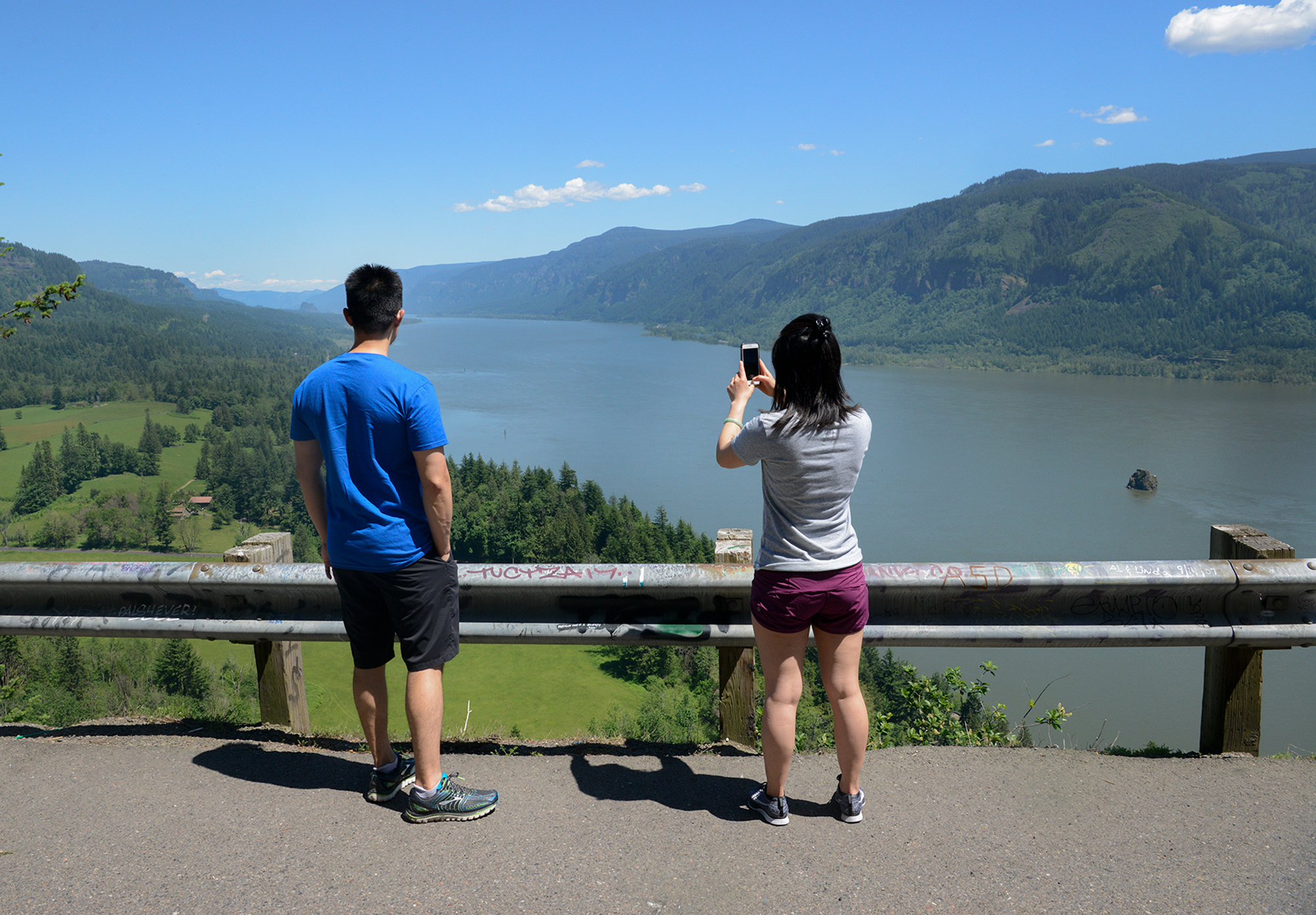
Increasingly popular
Land managers have theories about how the Gorge got so popular.
Unlike other wilderness areas or the national parks, which are hours away, the scenic area practically begins in backyards of roughly 2.4 million people living in the Portland metro area, including Clark County.
And unlike national parks, the scenic area doesn’t cost anything to visit. There are no permit systems or restrictions on the number of visitors — although parking fees are required in some spots.
The Northwest’s population continues to grow by the thousands every year. Its cities are filling with social-media-savvy newcomers, many of whom are conscripts to the region’s outdoors culture that gave rise to brands like Columbia Sportswear and REI.
Tourism is an $11.3 billion industry in Oregon and the Gorge is a top draw, according to Travel Oregon, the state’s semi-independent tourism agency.
In 2014, Travel Oregon began an advertising campaign called “The Seven Wonders of Oregon,” which highlighted some of the state’s most stunning places.
The Columbia River Gorge was featured, and more specifically, so were shots of Multnomah Falls and hikers wading through the creek in Oneonta Gorge.
Gorman said the campaign did a lot for tourism in the region, and shined a spotlight on Oneonta Gorge.
“I think that created an uptick in certain areas nobody planned for,” he said. “I think they had an impact in an unintended way.”
Linea Gagliano, director of global communications for Travel Oregon, said tourism is a vital part of a diversified economy.
Enlarge

Lauren Petrizzo
When international visitors are factored in, tourism can be considered an export. It has become the third-largest industry for rural Oregon — just behind natural resource extraction (logging, mining) and agriculture.
The agency promotes the Gorge and other Oregon assets to “driving markets” of neighboring states, although other countries including China and Japan are also part of the equation. However, she’s quick to say much of the Gorge’s increased popularity is a function of population growth in the Portland metro area.
Gagliano argues that the phrase “loved to death” focuses too heavily on the negative and neglects to highlight the benefits of tourists spending their money in Gorge communities.
“I don’t believe in the phrase ‘loved to death,’ ” she said. “Because so many businesses depend on the economic impact from those visitors.”
According to the agency’s latest regional tourism program executive summary for the Mount Hood/Gorge region, tourists spent $369 million and supported 4,600 jobs in 2015.
“But, congestion issues during the high season and over visitation to the same iconic attractions is leaving negative impacts on the area,” the report said.
Enlarge

Ariane Kunze
Softening the blow
Gorge stakeholders are taking steps in the short-term to better manage crowds and thinking about how to better oversee the resources in the long-term.
Last year, Travel Oregon conducted a number of tourism development workshops in the Gorge aimed at helping the region’s communities stimulate their economies through sustainable tourism development.
Then Travel Oregon worked with Friends of the Columbia Gorge, ODOT and the Forest Service to create a new campaign called “Ready, Set, GOrge!”
“We recognize if we don’t take care of it in a responsible way we won’t have anything to promote,” Gagliano said.
The campaign tries to dissuade spontaneous trips to the Gorge’s top sites on weekend afternoons. Instead, it encourages people to visit early in the morning or late in the day and consider the attractions farther from the waterfalls.
It also urges people take a shuttle, such as the Columbia Gorge Express, the so-far popular weekend shuttle system offered as an alternative to driving to Multnomah Falls.
This year, the Forest Service and Friends of the Columbia Gorge partnered to try to ease the impact at Dog Mountain. On weekends between May and June, volunteers urged visitors to ride a shuttle on future trips, talked about the trails and provided an on-the-ground presence to discourage car prowlers.
Enlarge

Ariane Kunze
Larger changes are likely on the horizon.
The Forest Service and the Columbia River Gorge Commission are looking to the future of managing the scenic area with a multiyear review and revision process they’re calling “Gorge 2020.” The plan will likely have several priorities, but changes to recreation site management is likely to be high on a short list.
Recreation sites in the Gorge are classified under what’s called “recreation intensity classes,” which dictate parking lot size, how “hardened” a trail is, and if there are restrooms, depending on how heavily a place is used.
Land managers will weigh the issues. Does it make sense to have a low-intensity class attraction built next to a high-intensity site, or is it better to gradually step down the level of development from a high-use area? Do you limit the number of visitors at a certain location or do you develop it to accommodate more people — or is the answer somewhere in the middle?
“A lot of this can get really into the weeds of policymaking, the other gets into the philosophical side,” Pawlitz said. “Does the management plan help us? If not, should we add something to the plan?”
These questions and other topics will require collaboration with other stakeholders, Pawlitz said. The Forest Service and the Columbia River Gorge Commission will likely release a draft list of priorities in September.
But the Gorge’s popularity shows no sign of waning. Regardless of actions land managers take and all the hours volunteers spend educating the general public, the fate and health of the scenic area’s most beautiful places depends on the users themselves.
“It’s not that you love something to death, it’s that you use something to death,” Pawlitz said. “One of the things people can do if they come out here and use these public lands is put some love into it.”
That means following the outdoors ethic of leaving no trace, and maybe picking up a little trash on the way out.
Dameon Pesanti: 360-735-4541; dameon.pesanti@columbian.com; twitter.com/dameonoemad
Enlarge

Ariane Kunze
Social media plays key role in drawing crowds
Social media’s, more specifically Instagram’s, role in recreation-related environmental degradation is a much-debated topic in the outdoors communities due to the intense spotlight it can shine on a specific locations.
Many of the Columbia River Gorge’s most popular destinations are widely posted by users.
On Instagram, the hashtags #DogMountain has been used 25,770 times, #OneontaFalls and #OneontaGorge together more than 26,000 times, #MultnomahFalls more than 160,000 and #ColumbiaRiverGorge more than 186,000 times.
“This is a big part of it,” said Kevin Gorman, executive director of the conservation group Friends of the Columbia Gorge, referencing Oneonta Gorge’s surging popularity. “Even though you could always drive there before, once it starts living in social media people start making the connection and they go.”
The internet has changed the way people recreate, and made it easier for them to visit the exact locations others have been the world over. All it takes is another user who post photos tagged with very searchable terms and maybe the GPS coordinates.
— Dameon Pesanti